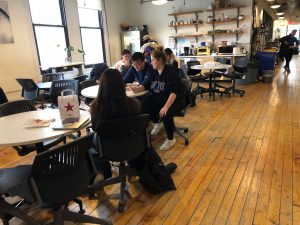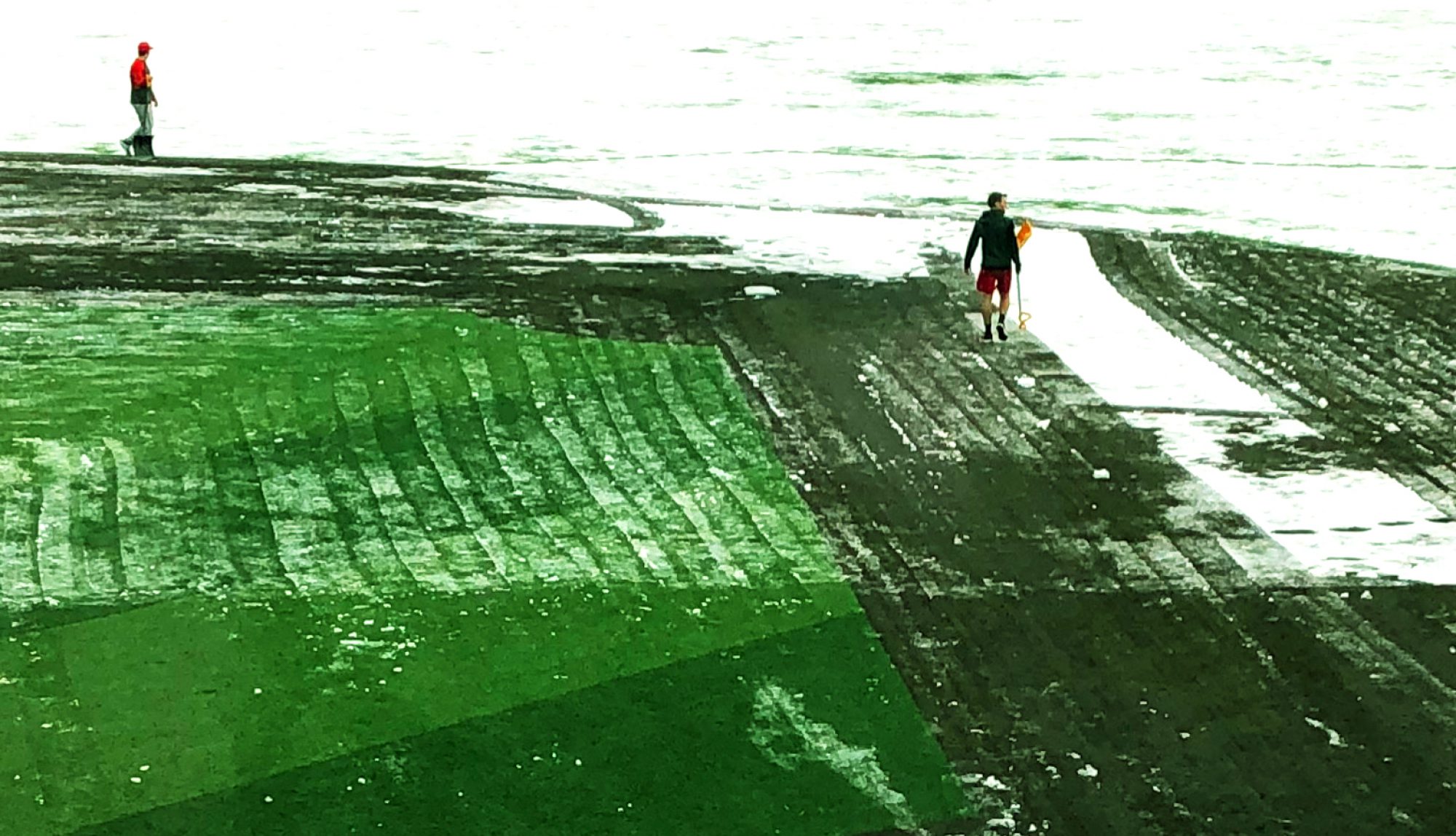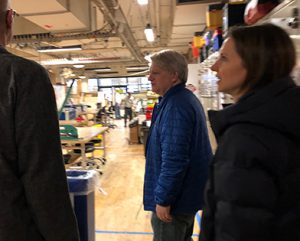
5 April 2019. We meet up with former Malmö University and Interactive Institute Fulbright Exchange student (2002-2003) Jennifer Magnolfi at the New York University’s Broadway location and the Tisch School of the Arts. Together with Jennifer, now running Programmable Habitats, an R&D consulting practice specializing in the development of high-tech, future work environments, we are going to meet with Tom Igoe, Professor and head of the physical computing section within the ITP/Interactive Technologies Program at Tisch. This program is especially interesting as it is one of the first in the field of interaction design, now running on its 40th academic year. And through Arduino – Tom Igoe being one of its co-founders – this is an environment that also has a great deal of K3 relevance.
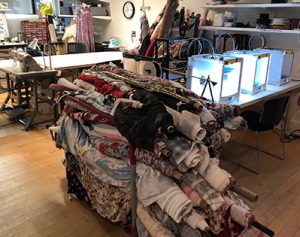
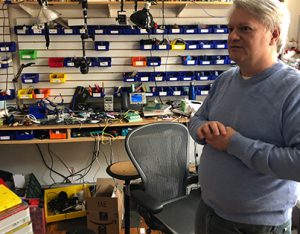
Tom receives us in his office, or perhaps should we say in his lab; a living proof of knowing being situated and material, closely associated with tinkering in the most literal sense of the word. From here, he takes us on a tour of the study areas and ‘social spaces’, shops and labs, seamlessly integrated with one another and a step away from the rooms of teaching staff. In this setting, 220 ITP Master students work, including around 100 IMA (Interactive Media Arts) undergraduates. Together, these two programs, the ITP and the IMA, present a coherent environment with a wide range of opportunities. Roaming through what immediately appears to be an extremely creative space, we discuss present conditions for higher design education. While passing 3D printers in operation lined up next to sewing machines, a stockpile of fabrics, a shelf storing ongoing BioDesigning Future Food experiments, and an abundant number of other, as educative as creative, physically computable stuff. The question of a learning environment is a hot topic also here; the program is facing a move from its present prestigious Manhattan location to the Brooklyn Polytechnic Campus, and the outcome of this move is still highly unclear. What are the material, spatial, relational and transformative challenges today for designerly explorations, and what is waiting around the corner?
